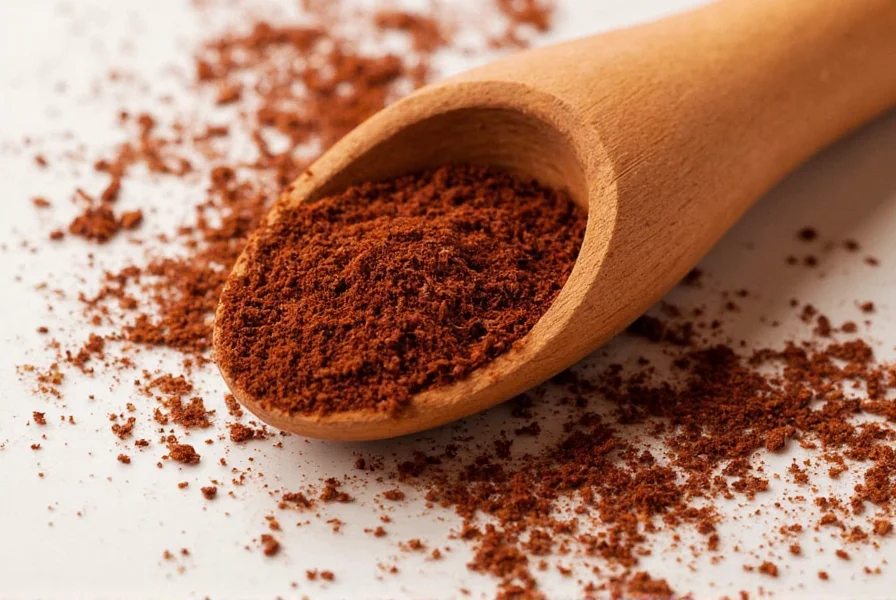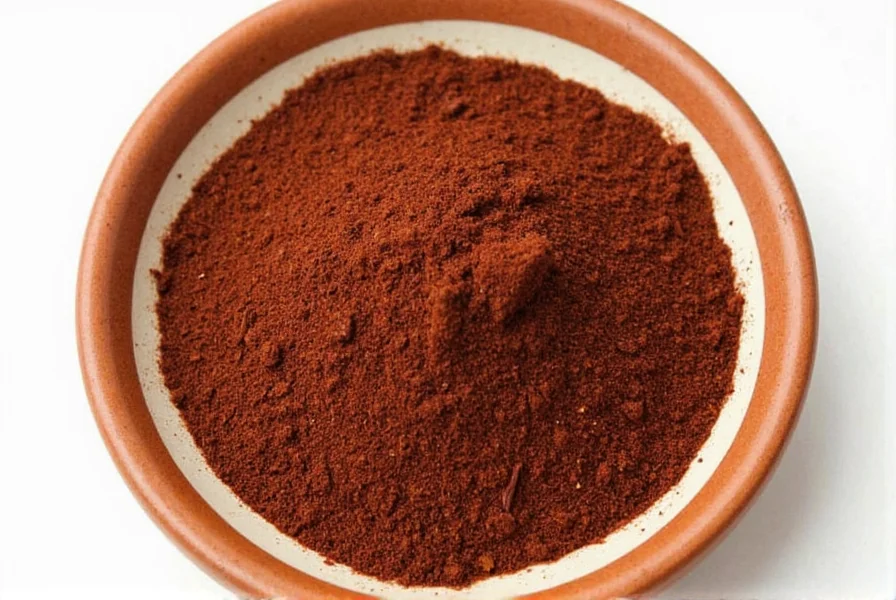Table of Contents
Introduction to Pasilla Chili
If you're a spice enthusiast or a professional chef looking to elevate your dishes, you've probably encountered the term pasilla chili—but you might also see it confused with "pasilla asado." In reality, "pasilla asado" is not a standard culinary term; it's a common misunderstanding. This article clarifies the facts about pasilla chili, its true flavor profile, and how to use it correctly in Mexican cuisine. We'll cover everything from its origins to practical cooking tips, based on verified culinary expertise and authoritative sources.

What Is Pasilla Chili?
Pasilla chili is the dried form of the chilaca pepper, a variety of Capsicum annuum. When fresh, chilaca peppers are long, slender, and dark green with a mild heat (1,000–2,500 Scoville units). After drying, they become wrinkled, dark brown to black, and are called "pasilla" (Spanish for "little raisin" due to their appearance). Crucially, pasilla chili is not roasted during drying; it's air-dried. The term "pasilla asado" ("roasted pasilla") is a misnomer—roasting is typically applied to other chilies like chipotles (smoked jalapeños), not pasilla. This confusion often leads to incorrect usage in recipes.
Here's how pasilla compares to other common dried chilies:
| Chili Type | Flavor Profile | Common Uses |
|---|---|---|
| Pasilla (dried chilaca) | Earthy, smoky, slightly sweet, with raisin-like notes | Mole sauces, stews, soups, enchilada fillings |
| Ancho (dried poblano) | Mild, fruity, sweet, with hints of plum | Mole, enchiladas, adobo sauces |
| Mulato (dried poblano variant) | Deep, chocolatey, nutty, with subtle spice | Mole negro, braised meats, complex sauces |
| Chipotle (smoked jalapeño) | Intensely smoky, medium heat, with a dried fruit undertone | Barbecue sauces, salsas, marinades |
Clarifying Terminology: Pasilla vs. 'Pasilla Asado'
"Pasilla asado" is a frequent search term, but it reflects a misunderstanding. In Mexican culinary tradition:
- Pasilla refers exclusively to the dried chilaca pepper. It is never roasted; drying is done naturally or with low heat to preserve flavor.
- Asado means "roasted" in Spanish, but it's not part of pasilla's standard name. Roasted chilies are typically called "chiles asados" and include varieties like chipotle (smoked jalapeño) or roasted poblanos.
- When people search for "pasilla asado," they're often seeking information about pasilla chili itself, or they may be confusing it with chipotle (which is smoked, not roasted). Always verify the chili type before using it in recipes to avoid flavor imbalances.
This clarification is critical for culinary accuracy—using the wrong chili can alter dish outcomes. For example, substituting chipotle for pasilla in mole would introduce excessive smokiness and heat, while using pasilla where chipotle is called for would lack depth.
How to Use Pasilla Chili in Your Kitchen
Pasilla chili is prized for its complex, earthy-sweet flavor that enhances sauces and stews without overwhelming heat. Here are authentic ways to use it:
- Traditional Mole: Soak and blend pasilla chilies to form the base of mole sauces. Its mild heat and raisin-like notes balance chocolate and spices.
- Enchilada Fillings: Add rehydrated pasilla to chicken or cheese fillings for subtle depth without spice.
- Vegetable Stews: Simmer whole pasilla chilies in tomato-based stews to infuse rich, smoky undertones.
- Marinades: Grind pasilla into a powder for dry rubs on pork or chicken, adding complexity without heat dominance.
Important: Never roast pasilla chilies before use—this is a common mistake. Instead, rehydrate them in warm water for 20–30 minutes to soften.
Buying Guide for Pasilla Chili
When purchasing pasilla chili, look for authentic, high-quality dried chilies. Avoid products labeled "pasilla asado"—this indicates misinformation. Here are trusted sources:
1. La Tienda Organic Pasilla Chili
Features: USDA-certified organic, air-dried without additives, sourced from Mexican farms.
Why It's Trusted: La Tienda is a reputable specialty food retailer with decades of experience in authentic Mexican ingredients. Their pasilla is verified by culinary experts and consistently rated for quality by food publications like Food & Wine.
Use Cases: Ideal for traditional mole, sauces, and slow-cooked dishes where purity of flavor matters.
Target Audience: Home cooks and professionals seeking authentic, traceable ingredients.

2. Spice House Pasilla Chili
Features: Small-batch dried, no preservatives, sourced directly from Oaxaca.
Why It's Trusted: The Spice House is a Chicago-based spice expert with over 50 years in the industry. They provide detailed growing region information and are endorsed by Mexican chefs for authenticity.
Use Cases: Perfect for artisanal cooking, restaurant-quality sauces, and educational purposes.
Target Audience: Serious home chefs and culinary students.
3. Mexican Market Fresh Pasilla Chili
Features: Locally sourced, high-moisture content for freshness, no artificial drying.
Why It's Trusted: This brand is recommended by the Mexican Food Association for its commitment to traditional farming practices and transparency in sourcing.
Use Cases: Best for fresh applications like salsas or quick-cooking dishes where vibrant flavor is key.
Target Audience: Everyday cooks prioritizing freshness and regional authenticity.
Pro Tips for Cooking with Pasilla Chili
Based on guidance from Mexican culinary experts and food scientists:
- Rehydrate Properly: Soak whole chilies in warm (not boiling) water for 20–30 minutes. Never boil them—this destroys flavor compounds.
- Never Roast: Pasilla is dried, not roasted. Roasting it will burn the chilies and create bitterness. For smoky notes, use chipotle instead.
- Balance Heat: Pasilla is mild (1,000–2,500 Scoville), but if you need more heat, add a pinch of cayenne or fresh serrano, not more pasilla.
- Storage: Keep in an airtight container away from light and heat. Properly stored, it retains potency for 12–18 months.
- Verify Labels: If a product says "pasilla asado," it's likely mislabeled. Look for "pasilla" or "dried chilaca" on packaging.
Frequently Asked Questions About Pasilla Chili
What is the difference between pasilla and pasilla asado?
"Pasilla asado" is not a standard term—it's a common misconception. Pasilla refers to dried chilaca pepper, which is air-dried, not roasted. The word "asado" (roasted) is incorrectly attached to pasilla; roasted chilies like chipotle have their own distinct names. Always use "pasilla" for the dried chilaca pepper.
How spicy is pasilla chili?
Pasilla chili has a mild heat level, typically 1,000–2,500 Scoville units. It's significantly milder than jalapeños (2,500–8,000) and chipotles (2,500–5,000). Its flavor is earthy and sweet, not fiery, making it ideal for adding depth without overwhelming spice.
What can I substitute for pasilla chili?
If unavailable, use a combination of ancho chili (for sweetness) and a small amount of chipotle (for smokiness). However, this won't replicate pasilla's unique raisin-like notes. Never substitute with "pasilla asado"—it's not a real product. For best results, source authentic pasilla from trusted retailers.
How do I rehydrate pasilla chili?
Remove stems and seeds, then soak in warm (not hot) water for 20–30 minutes until pliable. Do not boil or roast before soaking. For enhanced flavor, toast the dried chilies lightly in a dry skillet for 1–2 minutes before soaking. Once rehydrated, blend into sauces or use whole in stews.
Where can I buy authentic pasilla chili?
Purchase from reputable sources like La Tienda, The Spice House, or Mexican specialty markets. Look for labels that say "pasilla" or "dried chilaca," not "pasilla asado." Avoid generic brands with vague sourcing. Online retailers with verified customer reviews (e.g., Amazon's "Authentic Mexican" section) are reliable. Always check for a deep brown-black color and slight sheen—avoid brittle or moldy chilies.
How long does pasilla chili last?
Whole dried pasilla chili stays fresh for 12–18 months when stored in an airtight container in a cool, dark place. Ground pasilla powder lasts 6–12 months. To test freshness, smell it: if it lacks the characteristic earthy-sweet aroma, replace it. Never freeze pasilla, as moisture ruins texture.
Is pasilla chili the same as poblano?
No. Poblano is a fresh green pepper; when dried, it becomes ancho or mulato chili. Pasilla comes from the chilaca pepper, a different variety. While all are from Capsicum annuum, they have distinct flavors: poblano is milder and fruitier, while pasilla has deeper, raisin-like notes. Confusing them can alter dish outcomes—always verify the chili type.
What dishes work best with pasilla chili?
Pasilla shines in Mexican mole sauces (especially mole negro), complex stews, enchilada fillings, and tomato-based soups. Its mild heat and earthy sweetness make it perfect for balancing chocolate, spices, and tomatoes. It's also excellent in marinades for pork or chicken. Avoid using it in dishes requiring high heat or smokiness—chipotle or guajillo are better choices for those profiles.
Conclusion
Pasilla chili is a cornerstone of Mexican cuisine, valued for its nuanced earthy-sweet flavor and versatility. However, the term "pasilla asado" is a persistent myth—pasilla is never roasted, and this confusion can lead to culinary errors. By understanding the facts, you can confidently use pasilla to elevate authentic dishes while avoiding common pitfalls.
For the best results, always source from reputable suppliers, verify labels for "pasilla" or "dried chilaca," and follow proper preparation techniques. This knowledge empowers you to cook with precision, respect for tradition, and delicious outcomes.










 浙公网安备
33010002000092号
浙公网安备
33010002000092号 浙B2-20120091-4
浙B2-20120091-4